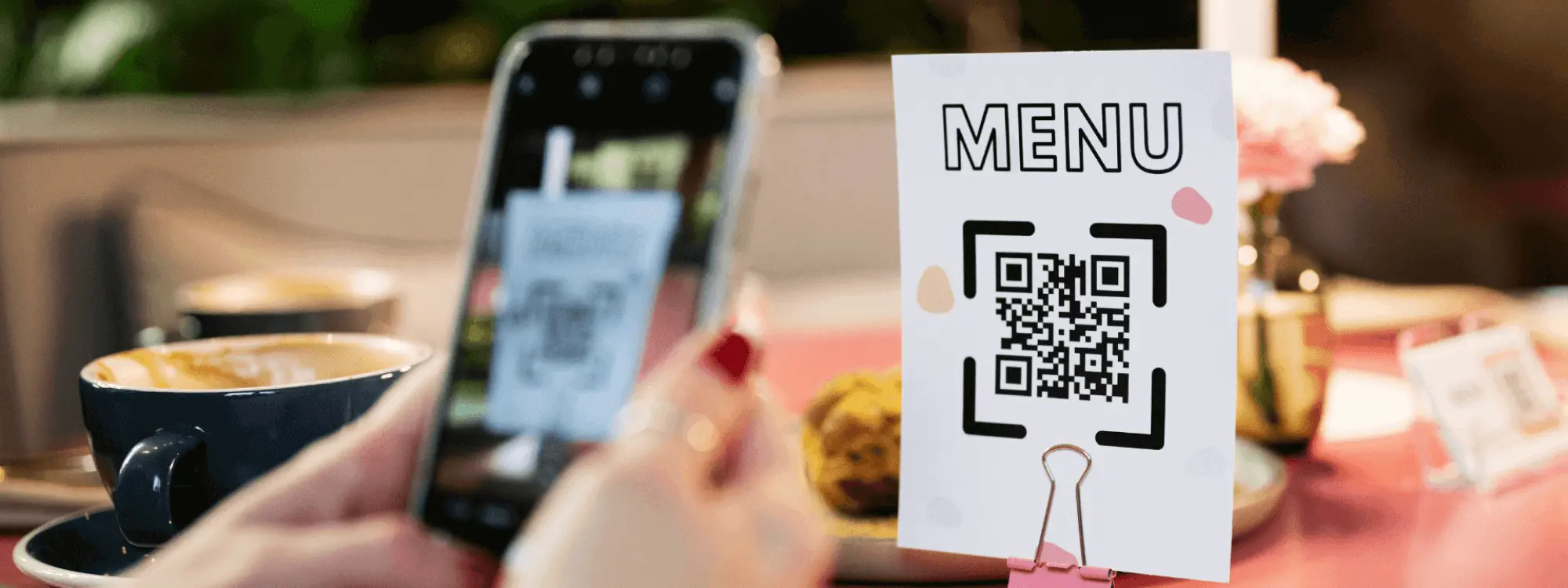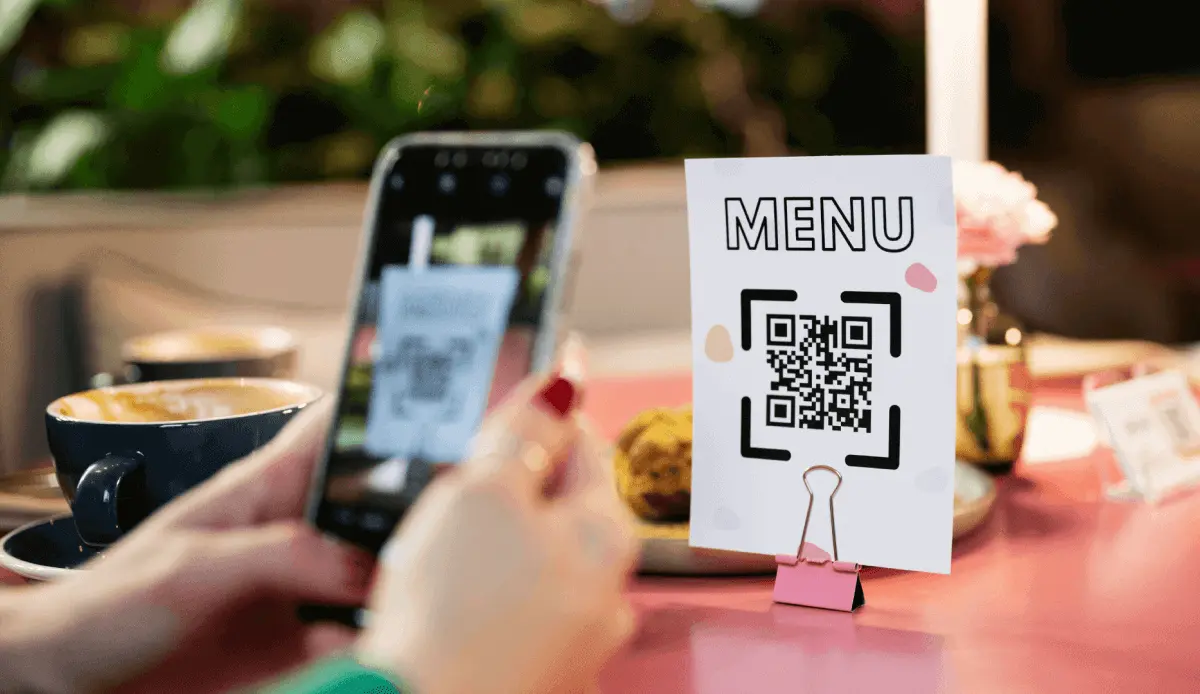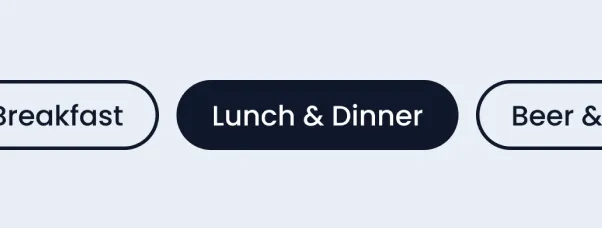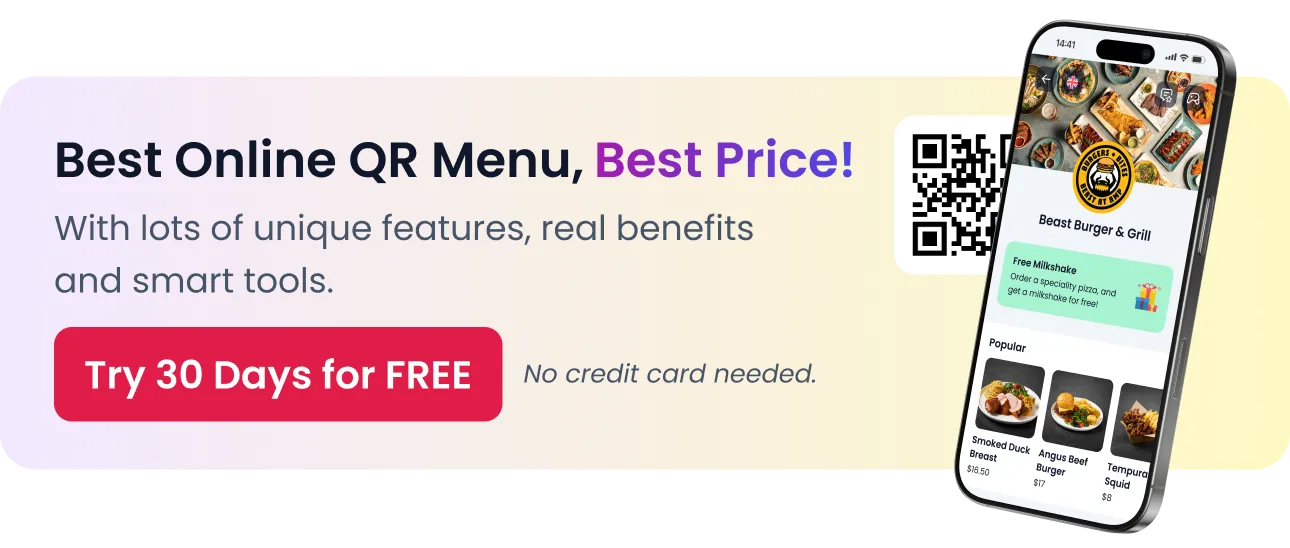

What are The Advantages of Online QR Menus in Restaurants?
In the rapidly evolving landscape of the restaurant industry, staying ahead of technological trends is no longer just an option—it’s a necessity. One of the most significant shifts in recent years has been the adoption of online QR menus, transforming the way customers interact with dining establishments. As health concerns and the demand for convenience continue to shape consumer behavior, the traditional paper menu is quickly becoming a relic of the past.
Online QR menus offer a seamless, contactless experience that aligns perfectly with the expectations of modern diners. But the benefits extend far beyond customer convenience. From operational efficiency to environmental sustainability, these digital menus present a myriad of advantages that can help restaurants not only survive but thrive in today’s competitive market.
In this guide, we’ll explore the numerous benefits of implementing online QR menus in your restaurant, uncovering how they can enhance the dining experience, streamline operations, boost marketing efforts, and contribute to a greener planet. Whether you’re considering making the switch or looking to optimize your existing digital menu strategy, this comprehensive overview will provide you with the insights you need to make an informed decision.
Would you like to listen our deep-dive conversation about this article?
Understanding Online QR Menus
Online QR menus are more than just a digital alternative to traditional menus—they represent a significant shift in how restaurants engage with their customers. As these menus become increasingly popular, understanding how they work and what sets them apart from traditional options is essential for any restaurant owner looking to stay competitive.
What is an Online QR Menu?
An online QR menu is a digital version of a restaurant’s menu that customers can access using a QR code.
Definition: An online QR menu is a digital menu accessible through a quick response (QR) code, typically scanned using a smartphone or tablet.
Comparison with Traditional Menus:
- Traditional Paper Menus:
- Physical, tangible
- Requires regular reprinting for updates
- Higher costs associated with design and printing
- Online QR Menus:
- Digital and easily accessible
- Can be updated instantly with no printing costs
- Environmentally friendly, reducing paper waste
How Do QR Menus Work?
QR menus use simple technology to provide a seamless, contactless dining experience.
Technology Behind QR Codes:
- QR codes are a type of matrix barcode that stores information like URLs, which can be scanned using a smartphone camera or a QR code reader app.
Steps Customers Take to Access the Menu:
- Scan the QR code using a smartphone or tablet.
- The device automatically redirects to the restaurant’s digital menu.
- Customers browse and select items directly from their device.
Compatibility with Different Devices and Platforms:
- QR menus are compatible with most smartphones and tablets, regardless of the operating system (iOS, Android).
- No need for special apps—almost all devices have built-in QR code scanning capabilities.
Understanding the basics of online QR menus and how they function is the first step in appreciating their value. The following sections will delve into the specific benefits and applications of these digital menus in a restaurant setting.
Enhancing the Customer Experience with QR Menus
In today’s fast-paced world, delivering an exceptional customer experience is crucial for the success of any restaurant. Online QR menus play a vital role in elevating this experience by offering convenience, personalization, and safety—all of which are increasingly important to modern diners. This section explores how QR menus can significantly enhance the dining experience, making it more enjoyable and efficient for your customers.
Streamlined Ordering Process
QR menus simplify and speed up the ordering process, reducing wait times and enhancing customer satisfaction.
Reducing Wait Times for Menu Access:
- Instant access to menus by scanning a QR code.
- Eliminates the need to wait for a server to bring physical menus.
Facilitating Quicker Order Placements:
- Customers can place orders directly from their devices.
- Reduces time spent on ordering, allowing for faster service.
Minimizing Errors in Communication:
- Direct input from customers reduces the chance of miscommunication.
- Orders are sent directly to the kitchen, minimizing human error.
Personalized Dining Experience
QR menus allow restaurants to tailor the dining experience to individual customer preferences, enhancing satisfaction.
How QR Menus Can Cater to Customer Preferences:
- Ability to display customized menus based on previous orders or dietary preferences.
- Highlighting customer favorites and suggesting new items based on past behavior.
Integrating Dietary Restrictions and Preferences:
- Easy filtering options for allergens, vegan, vegetarian, gluten-free, etc.
- Ensures that customers have a clear view of what they can safely order.
Creating a Unique Experience for Repeat Customers:
- Loyalty programs and special discounts can be integrated directly into the QR menu.
- Personalized messages or greetings for returning customers.
Contactless Dining: A Modern Necessity
In a post-pandemic world, the demand for contactless options has skyrocketed, making QR menus an essential tool for customer safety and trust.
Importance of Contactless Options Post-Pandemic:
- Reduces physical contact between staff and customers.
- Aligns with health guidelines and customer expectations for safety.
Building Trust and Safety with Customers:
- Customers are more likely to trust a restaurant that prioritizes their safety.
- Contactless options contribute to a more hygienic dining environment.
Encouraging Repeat Visits Through Safety Measures:
- Emphasizing safety can lead to increased customer loyalty.
- Helps to position the restaurant as a responsible and caring business.
Enhancing the customer experience through QR menus not only meets the demands of today’s diners but also sets your restaurant apart in a competitive market. In the next sections, we’ll explore how these menus can improve operational efficiency and contribute to cost savings, further solidifying their value.
Operational Efficiency and Cost Savings
Implementing online QR menus in your restaurant doesn’t just enhance the customer experience; it also significantly boosts operational efficiency and reduces costs. By streamlining various aspects of menu management and order processing, QR menus can help you optimize resources, reduce waste, and ultimately improve your bottom line. In this section, we’ll explore the specific ways QR menus contribute to operational efficiency and cost savings.
Reducing Printing and Design Costs
Switching to QR menus eliminates the need for physical menu printing, leading to substantial cost savings.
Elimination of Physical Menu Printing:
- No need for regular reprints due to menu changes, wear and tear, or seasonal updates.
- Immediate cost reduction by removing printing expenses.
Updating Menus in Real-Time Without Extra Costs:
- Instant digital updates allow for quick changes in pricing, availability, or specials.
- No additional costs for design or reprinting every time a menu update is needed.
Environmental Benefits:
- Reduces paper waste, contributing to your restaurant’s sustainability efforts.
- Aligns with eco-friendly practices, which can appeal to environmentally conscious customers.
Improved Order Accuracy
QR menus help to minimize human errors in order taking, leading to more accurate and efficient service.
Minimizing Human Error in Order Taking:
- Direct communication from customers to the kitchen reduces the risk of misinterpretation.
- Orders are less likely to be incorrect, improving customer satisfaction.
Reduction of Order Mistakes and Associated Costs:
- Fewer errors mean less food waste and fewer comped meals, which can quickly add up.
- Streamlined communication between front-of-house and kitchen staff.
Enhancing Customer Satisfaction:
- Accurate orders lead to happier customers, which can increase repeat business.
- Reduces the likelihood of negative reviews related to service issues.
Streamlining Menu Management
Managing your restaurant’s menu becomes more efficient and centralized with the use of QR menus.
Easy Updates for Seasonal Dishes or Specials:
- Quickly add or remove items from the menu without the need for physical reprints.
- Ideal for restaurants with frequently changing offerings or daily specials.
Managing Multiple Locations’ Menus Centrally:
- For restaurants with multiple locations, menus can be managed from a single digital platform.
- Ensures consistency across locations while allowing for location-specific items or pricing.
Improving Inventory Management:
- Real-time updates to the menu can reflect inventory levels, reducing the risk of running out of popular items.
- Helps to optimize stock levels and reduce food waste.
The operational efficiency and cost savings offered by QR menus are clear advantages for any restaurant. By reducing costs, improving order accuracy, and streamlining menu management, QR menus allow you to focus on delivering excellent service and growing your business. Next, we’ll delve into how these digital menus can also drive your marketing and sales efforts, further enhancing your restaurant’s success.
Boosting Marketing and Sales
Online QR menus offer more than just operational benefits—they can also be powerful tools for enhancing your marketing efforts and driving sales. By leveraging the data and flexibility that digital menus provide, you can create targeted marketing campaigns, increase average order value, and strengthen customer engagement. This section will explore how QR menus can help you boost your restaurant’s marketing and sales.
Leveraging Data from QR Menus
QR menus generate valuable data that can be used to understand customer behavior and tailor marketing efforts.
Tracking Customer Preferences and Behaviors:
- Analyze which menu items are most popular to inform future menu decisions.
- Understand peak ordering times and adjust promotions accordingly.
Using Data for Targeted Marketing Campaigns:
- Segment customers based on their order history and preferences for personalized promotions.
- Send targeted offers, such as discounts on frequently ordered items, to encourage repeat business.
Enhancing Customer Loyalty Programs:
- Integrate loyalty programs directly into the QR menu experience.
- Reward customers for frequent visits or high-value orders, encouraging them to return.
Upselling and Cross-Selling Opportunities
QR menus can be strategically designed to highlight high-margin items and suggest complementary dishes.
Strategic Placement of High-Margin Items:
- Highlight profitable dishes or beverages at the top of the menu or in dedicated sections.
- Use visual cues, such as images or bold fonts, to draw attention to these items.
Automated Suggestions Based on Customer Orders:
- Use data-driven recommendations to suggest appetizers, sides, or drinks that complement the main order.
- Implement “frequently ordered together” suggestions to increase average order value.
Customizing Offers Based on Order History:
- Tailor special offers to repeat customers based on their previous orders.
- Encourage upselling by offering discounts on add-ons or premium upgrades.
Enhancing Social Media Integration
QR menus can be linked directly to your restaurant’s social media platforms, making it easier for customers to share their experience online.
Encouraging Social Shares Through QR Codes:
- Include links to social media profiles or hashtags within the QR menu.
- Offer incentives, such as discounts or freebies, for customers who share their dining experience online.
Linking to Promotions and Loyalty Programs:
- Promote social media contests or special events directly through the QR menu.
- Encourage customers to follow your social media pages for exclusive deals and updates.
Creating a Seamless Digital Experience:
- Ensure that the QR menu and social media pages are mobile-friendly and easy to navigate.
- Use the QR menu as a gateway to your restaurant’s broader digital ecosystem, including your website and online reservation system.
By leveraging the marketing and sales potential of QR menus, you can create a more personalized and engaging experience for your customers, while also driving revenue growth. In the next section, we’ll look at how QR menus contribute to sustainability and appeal to eco-conscious diners, further enhancing your restaurant’s reputation and customer base.
Sustainability and Environmental Impact
In an era where environmental consciousness is increasingly influencing consumer choices, adopting sustainable practices is more important than ever for restaurants. Online QR menus offer a practical solution to reduce your environmental footprint while also appealing to eco-conscious diners. This section explores how QR menus contribute to sustainability and how they can enhance your restaurant’s reputation as an environmentally responsible business.
Reducing Paper Waste
One of the most immediate and tangible benefits of QR menus is the significant reduction in paper waste.
Environmental Benefits of Going Digital:
- Eliminates the need for printed menus, which often require frequent reprinting due to wear, tear, or menu updates.
- Reduces the overall demand for paper, conserving natural resources and reducing deforestation.
Supporting Your Restaurant’s Sustainability Goals:
- Aligns with broader sustainability initiatives, such as reducing waste and lowering carbon emissions.
- Demonstrates a commitment to environmentally friendly practices, which can be communicated to customers.
Cost Savings from Reduced Waste:
- Lower expenses related to printing and paper supply.
- Less waste management needed, reducing both environmental impact and operational costs.
Aligning with Eco-Conscious Consumers
QR menus resonate with environmentally aware customers, enhancing your restaurant’s appeal to this growing demographic.
Attracting Customers Who Value Sustainability:
- Eco-conscious diners are more likely to support restaurants that prioritize sustainability.
- QR menus serve as a visible symbol of your commitment to reducing environmental impact.
Marketing Your Eco-Friendly Approach:
- Highlight the environmental benefits of QR menus in your marketing materials, social media, and in-house messaging.
- Use your QR menu to share other sustainability initiatives, such as sourcing locally or reducing food waste.
Creating a Competitive Advantage:
- Differentiate your restaurant by promoting your eco-friendly practices, attracting a loyal customer base that values sustainability.
- Appeal to corporate clients or event planners who prioritize environmental responsibility when choosing venues.
By integrating QR menus into your restaurant’s operations, you not only reduce your environmental impact but also align with the values of an increasingly eco-conscious customer base. The next section will address potential challenges and provide strategies for overcoming them, ensuring that your implementation of QR menus is successful and well-received by all customers.
Overcoming Challenges with Online QR Menus
While online QR menus offer numerous benefits, they are not without their challenges. Successfully implementing QR menus requires addressing potential concerns from both customers and staff, ensuring accessibility for all users, and managing any technical issues that may arise. In this section, we’ll explore how to overcome these challenges to maximize the effectiveness of your QR menu system.
Addressing Customer Concerns
Understanding and addressing customer concerns is key to the successful adoption of QR menus.
Common Customer Objections and How to Overcome Them:
- Technology Resistance: Some customers may be hesitant to use QR menus due to unfamiliarity with the technology.
- Solution: Provide clear instructions on how to use the QR menu and offer assistance from staff when needed.
- Data Privacy: Concerns about data privacy may arise, especially with the increasing awareness of digital security.
- Solution: Assure customers that no personal data is collected when they access the menu and maintain transparency about any data usage.
- Preference for Physical Menus: Some customers may simply prefer traditional menus over digital ones.
- Solution: Offer a limited number of sanitized physical menus as an alternative for those who request them.
Ensuring Digital Accessibility
Making your QR menus accessible to all customers, regardless of their technical abilities or disabilities, is essential.
Making QR Menus User-Friendly for All Demographics:
- Use large, clear fonts and high-contrast colors to make the menu easy to read on any device.
- Include multi-language support to cater to a diverse customer base.
Compliance with Accessibility Standards:
- Ensure that the digital menu is compatible with screen readers for visually impaired customers.
- Follow web accessibility guidelines (such as WCAG) to create an inclusive experience.
Providing Alternative Options for Customers Without Smartphones:
- Keep a few tablets or devices available in the restaurant for customers who do not have smartphones.
- Offer to assist customers with accessing the QR menu if they encounter difficulties.
Managing Technical Issues
Technical challenges can arise when using QR menus, but proactive management can prevent them from disrupting service.
Solutions for Common Technical Problems:
- Weak Internet Connection: Poor Wi-Fi can hinder access to QR menus.
- Solution: Invest in a reliable internet connection and ensure strong Wi-Fi coverage throughout the restaurant.
- QR Code Scanning Issues: Some customers may struggle to scan the QR code due to device limitations or lack of familiarity.
- Solution: Provide tips for successful scanning, such as adjusting the distance from the code or using a QR scanning app.
Ensuring Reliable and Fast Internet Connections:
- Regularly test your internet speed and connection stability, especially during peak hours.
- Have a backup plan, such as a secondary Wi-Fi network or mobile hotspots, in case of internet outages.
By addressing these challenges proactively, you can ensure a smooth and positive experience for all customers using your online QR menus. The final section will explore future trends in QR menu technology, helping you stay ahead of the curve and continuously improve your restaurant’s digital offerings.
Future Trends in QR Menus
As technology continues to evolve, so too will the capabilities and applications of QR menus. Forward-thinking restaurants can stay ahead of the competition by embracing these emerging trends, which promise to further enhance the dining experience and streamline operations. This section will explore the future trends in QR menus, from the integration of artificial intelligence to the expansion of QR code usage beyond just menus.
Integration with AI and Personalization
Artificial intelligence (AI) is set to revolutionize QR menus by offering personalized dining experiences that cater to individual customer preferences.
How AI Can Enhance the Customer Experience:
- AI algorithms can analyze customer data to provide personalized menu recommendations based on past orders, dietary preferences, and even current weather conditions.
- Predictive analytics can suggest items that customers are likely to enjoy, increasing satisfaction and encouraging higher spending.
Predictive Analytics for Menu Personalization:
- QR menus can dynamically adjust based on real-time data, such as the time of day or inventory levels, to promote specific items.
- Personalized discounts or promotions can be automatically offered to customers based on their behavior and preferences.
Automated Feedback Collection:
- AI can be used to gather and analyze customer feedback directly through the QR menu, providing insights that help refine the dining experience.
- Use AI-driven sentiment analysis to gauge customer satisfaction and identify areas for improvement.
Expanding QR Code Usage Beyond Menus
The versatility of QR codes means they can be used for much more than just accessing menus, offering new opportunities for customer engagement and operational efficiency.
Additional Uses in Loyalty Programs, Feedback, and More:
- QR codes can link customers directly to loyalty program sign-ups, making it easier to enroll and participate.
- Use QR codes to gather instant feedback after meals, allowing customers to rate their experience and leave comments.
- Integrate QR codes with payment systems to streamline the checkout process, offering contactless payment options.
Potential Future Developments in QR Technology:
- Enhanced Interactivity: Future QR codes may allow for more interactive experiences, such as AR (augmented reality) menus that bring dishes to life in 3D.
- Seamless Integration with Other Technologies: QR menus could integrate with voice-activated systems, allowing customers to use voice commands to navigate the menu or place orders.
- Blockchain for Secure Transactions: The use of blockchain technology could be integrated with QR codes to ensure secure and transparent transactions, particularly for high-end dining experiences.
Sustainability and Ethical Practices in QR Code Use
As sustainability continues to be a major focus, QR code technology will likely evolve to support more ethical and environmentally friendly practices.
Eco-Friendly QR Code Printing:
- QR codes may be printed using eco-friendly inks and materials, further reducing the environmental impact.
- Restaurants may adopt reusable or biodegradable materials for displaying QR codes, aligning with sustainability goals.
Transparency and Ethical Sourcing Information:
- QR codes could link directly to information about the sourcing and sustainability of ingredients, allowing customers to make informed choices.
- Restaurants can use QR codes to showcase their commitment to ethical practices, such as fair trade and organic sourcing.
By staying informed about these future trends, restaurants can continue to innovate and provide cutting-edge experiences for their customers. As QR menus evolve, embracing these developments will help your restaurant remain relevant and competitive in an increasingly digital world.
Incorporating online QR menus into your restaurant operations offers a wide range of benefits, from enhancing the customer experience to driving operational efficiency, boosting marketing efforts, and promoting sustainability. As technology continues to advance, staying ahead of trends like AI integration and expanding the use of QR codes beyond menus will be crucial in maintaining a competitive edge. By addressing potential challenges and embracing these innovations, you can create a more engaging, efficient, and environmentally responsible dining experience that resonates with today’s tech-savvy and eco-conscious customers.
ABOUT THE AUTHOR
Erkin Coban
Your Customers Deserve The Best
And we got Menuviel for them.
The fastest and easy-to-use online QR menu with 12+ unique features. Choose Menuviel and elevate your service quality to the next level.
Use free for the first 30 days.

In This Article

Free AI Tools for Restaurants
TRY NOW ➜

Create multiple menus for each place/branch
Offer breakfast, dinner, drinks, or seasonal menus—all easily accessible in one simple scan.







